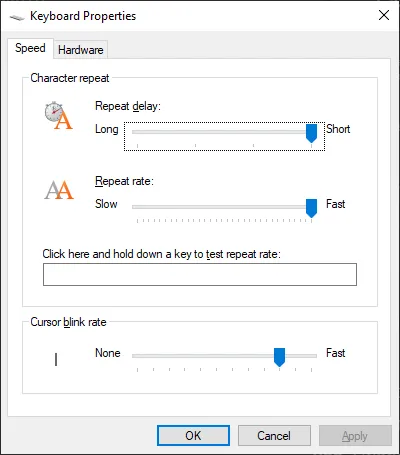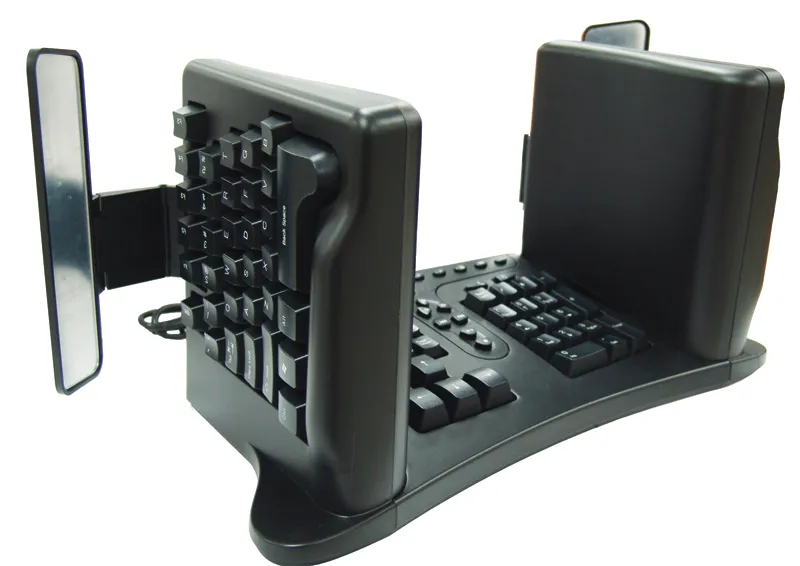here are some tips, shortcuts, techniques, whatever, that I collected over almost two decades of using a computer, relating to keyboards.
Why
Basically:
- sometimes, scrictly using the keyboard is faster (not all of the times)
- ..however, even in combination with the mouse, you can be way faster at certain things
- if you use the computer a lot, it could save you from RSI (Repetitive Strain Injury). From what I’ve read, RSI comes mostly from moving a hand between the keyboard and mouse frequently.
As a long time user of a computer, one naturally start piling up key shortcuts that are useful. There is literally no reason not to use them, unless you can’t be arsed to memorize or it’s not a shortcut at all (you could do the same thing faster with a mouse).
As for why I am writing this: I came across #NoMouse some time ago, probably while mindlessly surfing the web, and the challenge posed in it stuck to me, but I never took it up.
Until one day, I was removing the LEDs from my RGB ultra blaster gamer mouse, which were annoying because I could see them shine and change colors in my peripheral vision. While I was at it, I thought it would be cool to also remove the red LED for a further minimalistic look, but when I plugged my mouse in, it wan’t working anymore. I know they are called “optical” mouses for a reason but I thought this particular light wasn’t necessary. but then then I thought, this would be the perfect time to try NoMouse, since I had no other choice. And so I did for some 2.5 weeks.
If you read through the linked article, they have some interesting motives, mostly relating to web accessibility. And indeed, once you’re in it, even if you don’t have any impairments, you immediately notice when an application lacks this dimension of accessibility, even though what I really had in mind was speed and ergonomy.
Considerations
There are things that have been GUI or mouse dependent forever and for good reason, such as software for 3D modeling, image editing, sound editing, and certainly many others. I would say that basically any productivity software that’s not strictly dealing with text, is probably not a good experience when all you have is a keyboard. Luckily I didn’t have to use any of them through the duration of NoMouse, except for Figma, which I did have to use a mouse for.
Also, my keyboard is not the most ergonomic, it’s an average (white-label likely) IBM keyboard, maybe just recent enough to escape the beige box era. If you want to go deep into keyboard things, maybe you should look into a different keyboard type, like a split keyboard. I can’t and won’t talk much about that since I’ve never used one myself, but I hear good things. Also consider an ergonomic mouse, maybe even a trackball mouse.
Tips
Most of the advice will be for Windows since that’s what I’ve used for the longest. I now use Linux, but if you do too, you probably already have your own setup, or mine is too specific to what programs I use. I found macOS to be too annoying.
Also, I won’t be mentioning very basic shortcuts, like ctrl-c.
macOS users:
remember to do the usual conversion of ctrl to ⌘
Text
- ctrl + left / right - move (cursor) by one word left/right
- ctrl + backspace - move by one word left/right
- home / end - move to beginning/end of line
- ctrl + home / end - move to beginning/end of entire block of text
- ctrl + x - cut selected text (
Some people suggest using snippets. You could have something like
:emailexpands tome@erikz.xyz. I haven’t set this up myself. On macOS, you can set them up globally in the keyboard settings.
You could also consider improving your WPM (Words Per Minute) or typing speed, as that factors into all of these tips. Monkeytype is a great website. I personally think the default mode is too easy to help you improve and is not even representative of the WPM you’d get in real-life scenarions. When I switch from English to English 10k my speed always tanks, and that can only be a good thing for learning, so I would recommend you to practice with English 10k or above.
Also, when I was learning a new keyboard layout, daily practicing for 5-10 minutes felt like it helped me just as much as 30+ minutes, so I think it’s about how consistently you practice, not the total volume that you practice.
Windows specific
- win + e - opens the file explorer
- win + a - opens the notification center, useful for using quick actions, like enabling night mode
- win + up - maximizes the current window
- ctrl + l - on the file explorer (as well as regular internet browsers), will focus the search bar.
- you can also type
cmd(and enter) in the search bar to open a command line at the current location
- you can also type
- alt + f4 - plays a song
- You could also try AutoHotKey to make your own shortcuts.
Remapping caps lock
I found this snippet somewhere to remap Caps Lock to be used as esc. It doesn’t seem to work in some games but I still found it extremely useful as I happen to press esc all the time to cancel actions, close windows, close open images..
Paste this into a newly created something.reg file:
Windows Registry Editor Version 5.00
[HKEY_LOCAL_MACHINE\SYSTEM\CurrentControlSet\Control\Keyboard Layout]
"Scancode Map"=hex:00,00,00,00,00,00,00,00,03,00,00,00,3a,00,46,00,01,00,3a,00,00,00,00,00then save it, and double click it. Click yes if it prompts anything.
While using this, you may randomly HAVE CAPS LOCK TURN ON, BUT BECAUSE OF THIS SCRIPT YOU CAN’T EASILY TURN IT OFF. IN THAT CASE, YOU CAN OPEN THE ON-SCREEN KEYBOARD WITH win+ctrl+o and then click on the “Caps Lock” key to turn it off.
Decreasing repeating key delay and repeat rate
Takes less time to start repeating a key press if you’re holding it down, as well as repeating it faster. If you’re going to use keys to scroll or navigate in any way, this is especially useful. Press the win and search for “keyboard properties”. It should open the following panel from the control panel:

Browser
- Learn to use tab-based navigation. tab brings you to the next “interactive” element, e.g. a button, link, or input field, and shift + tab brings you to the previous.
- Very useful for quickly filling out forms and logins.
- This is available mostly only on the browser, but Some Electron/Chromium-based applications, like Discord or Spotify, also allow it. (tab navigation in those apps is usually bad, but it’s there)
- Vimium is a great extension. There is a similar one called Surfingkeys, but it felt generally laggier. It includes an embedded vim editor for input fields, but I am not that obsessed with vim that I’d use that.
using Vimium on Firefox to do casual things, no mouse at all - If you do decide to use keys to scroll, I recommend disabling smooth scroll as I find it nauseating. It’s likely in your browser’s settings.
Learning new shortcuts
I gave you some shortcuts that should feed you for a day. Now you should teach yourself how to fish and feed yourself for a lifetime. Unfortunately a lot of tips I come across are by accident, taught from friends, or found in articles explicitly about shortcuts. I suppose a good tip would be to always question whether you could be doing something faster (or if you’re even doing it the right way (if one exists)). Sometimes, menus and buttons have small print with what keys you can press to do that same action.
